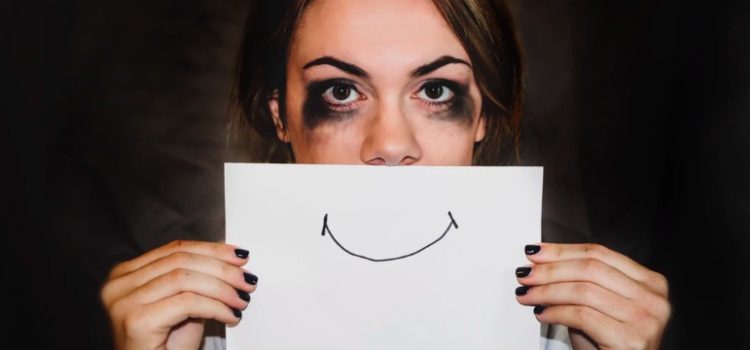

This article is an excerpt from the Shortform book guide to "Daring Greatly" by Brené Brown. Shortform has the world's best summaries and analyses of books you should be reading.
Like this article? Sign up for a free trial here .
Why are we so afraid of being vulnerable? Can showing your vulnerability be a good thing?
In Daring Greatly, Brené Brown suggests that what holds us back from living happy and meaningful lives is the widespread belief that being vulnerable is a weakness. But vulnerability gives you the power to move beyond shame and scarcity.
In this article, we identify and dismantle four common myths about being vulnerable.
What Holds Us Back From Being Vulnerable?
As a culture, we have many false beliefs about vulnerability that reinforce our focus on scarcity. Embracing vulnerability requires you to distinguish the myths from the truth.
Myth 1: “Vulnerability = Weakness”
This myth revolves around viewing vulnerability as a deficiency. When you view vulnerability this way, it comes from the belief that experiencing “negative” emotions means you’re weak. This belief is ultimately quite dangerous. Why? You become afraid of being vulnerable, which results in the expectation that others do the same. When they don’t, you feel superior, and see them as weak. Seeing yourself and others through a lens of contempt prevents you from connecting in meaningful ways.
This myth revolves around viewing vulnerability as a deficiency. When you view vulnerability this way, it comes from the belief that experiencing “negative” emotions means you’re weak. This belief is ultimately quite dangerous. Why? It causes you to fear being vulnerable, which results in the expectation that others do the same. When they don’t, you feel superior, and see them as weak. Seeing yourself and others through a lens of contempt prevents you from connecting in meaningful ways.
Being vulnerable means being present with the full spectrum of your emotional experience. You can’t experience joy without being aware of the possibility of sorrow, or experience sorrow without being aware of the absence of joy. In that vein, even positive experiences of vulnerability may remind you of darker emotions that you want to reject (grief, shame, rage, etc). Negative emotions make you feel weak and fearful, and because vulnerability opens you up to these emotions, you may see vulnerability as the problem. It doesn’t discriminate between positive or negative feelings. In order to reject negative emotion, you need to reject vulnerability. In order to reject vulnerability, you need to reject all emotions. You can only access that lighter end of the spectrum if you’re willing to be with the full spectrum.
Being vulnerable means being present with the full spectrum of your emotional experience. You can’t experience joy without being aware of the possibility of sorrow, or experience sorrow without being aware of the absence of joy. In that vein, even positive experiences of vulnerability may remind you of darker emotions that you want to reject (grief, shame, rage, etc). Negative emotions make you feel weak and fearful, and because vulnerability opens you up to these emotions, you may see vulnerability as the problem. It doesn’t discriminate between positive or negative feelings. In order to reject negative emotion, you need to reject vulnerability. In order to reject vulnerability, you need to reject all emotions. You can only access that lighter end of the spectrum if you’re willing to be with the full spectrum.
How Can You Dispel This Myth?
Vulnerability, in reality, is a neutral experience. You experience it no matter what. You do get to choose whether or not you embrace it, but you can’t embrace it if you see it as weakness.
A great way to dispel is to look at the definitions of “vulnerability” and “weakness.” Merriam-Webster defines Vulnerability as “open to attack or damage.” Weakness is defined as “the inability to withstand attack or wounding.” There are important distinctions in these definitions. To be weak means to be unable to defend, whereas to be vulnerable means to be open. You are certainly capable of being harmed when you’re open, but this does not mean you are defenseless.
You may think your emotions make you weak, but your emotions on their own demonstrate neither weakness, nor strength. The way you choose to view them is what determines your experience of them. Studies show that acknowledging the ways you are vulnerable, paradoxically, makes you stronger, not weaker. If you don’t acknowledge your vulnerability, you are not prepared to protect yourself. It’s the equivalent of sticking your head in the sand, and believing what you can’t see, can’t hurt you.
How Do You Confront This Myth?
You confront it by showing up, and being willing to be vulnerable, even at the risk of pain. Examples might be joining a recreational team for a sport you’ve never played, asking someone on a date, or applying for a job you don’t feel totally qualified for.
Vulnerability makes you stronger, not weaker. Simply choosing to show up builds courage, and courage is the foundation for embracing vulnerability.
Myth 2: “Being Vulnerable Isn’t My Thing”
Another common myth about vulnerability is that you can opt out of it. This is not true. Why?
You are vulnerable just by being alive. You could spend your whole life trying to avoid vulnerability, and you still wouldn’t escape it, because life is fragile by nature. It can be taken from you in an instant. All you do when you “opt out” of vulnerability is put on a mask. The mask might look like apathy, people-pleasing, comedic deflection, and so on. Its purpose is to protect you, but the mask is not who you are, and wearing it prevents you from connecting to and expressing your authentic self. This blocks your path to connecting with others and experiencing belonging.
How Do You Confront This Myth?
You can’t control whether or not you experience vulnerability, but you can control how you engage with it. You’ll learn more about this in later chapters.
Myth 3: “Vulnerability = Oversharing”
Part of the reason people feel repelled by being vulnerable may actually be due to confusing it with oversharing.
Oversharing is compulsive sharing with little to no consideration for consent or boundaries. This type of sharing actually causes people to feel disconnected and unsafe. Therefore, it prevents you from engaging with true vulnerability, and is a breeding ground for manipulative behavior. When you have a habit of oversharing, you are more likely to use vulnerability as a tactic to simply get your needs met, as opposed to engaging with vulnerability for the purpose of meaningful connection.
Vulnerability is reciprocal sharing built on mutual consent and healthy boundaries. It’s something you do with people you have established trust with. Sharing in this way allows you to feel safe and connected to one another.
How Do You Confront This Myth?
You can be mindful not to confuse healthy vulnerability with unhealthy oversharing. Trust is the foundation of healthy vulnerability. It’s a requirement for vulnerability, and also requires vulnerability in order to be built. Building trust is a gradual, deliberate process. In every moment, you have the opportunity to strengthen or erode it. When you take the opportunity to show up in your relationships, you build trust.
The greatest threat to trust is disengagement. When you stop caring, stop connecting, or stop taking opportunities to show up, trust dissipates.
Myth 4: “Lone Wolves Finish First”
One of the most romanticized myths in our culture is the notion that we can “go it alone.” We admire loners for what we perceive to be their personal strength. Unfortunately, living life without support generally causes suffering. Why? Research shows that you need and desire support from others, and vulnerability requires that you be willing to ask for or receive support. If you don’t learn to receive without judging yourself, you won’t be able to give without judgment, either. Not being able to give and receive meaningfully keeps you stuck in the middle, neither giving nor receiving in ways that feel fulfilling, and therefore perpetuating the belief that you are better off alone.
How Do You Confront This Myth?
You confront it by having the courage to sit with the discomfort that arises at the idea of reaching out to connect. When you lean in to your discomfort, and have the courage to ask for help, you gradually teach yourself that it is safe to be vulnerable with others. You learn that you don’t have to “go it alone”.
You can also confront it by paying attention to how you feel when you see others being vulnerable. Despite seeing our own vulnerability as weakness, we’re often inspired when we see it in others. When we see others have the courage to be vulnerable, we’re more likely to follow suit. A great example of this is in the workplace. If a person in a position of power has the courage to do something vulnerable, like take accountability for a mistake, or admit fears, it encourages others to do the same. The result is a more connected, engaged, and inspired workplace.
You will always be at risk of experiencing pain, and everything that adds meaning to life has vulnerability as a prerequisite. If you want to experience the joys of being alive, you must be willing to confront your fear of pain.

———End of Preview———
Like what you just read? Read the rest of the world's best book summary and analysis of Brené Brown's "Daring Greatly" at Shortform .
Here's what you'll find in our full Daring Greatly summary :
- What it means to live Wholeheartedly
- The 3 things you need to feel happy and healthy
- How scarcity and shame prevent you from achieving a Wholehearted life






